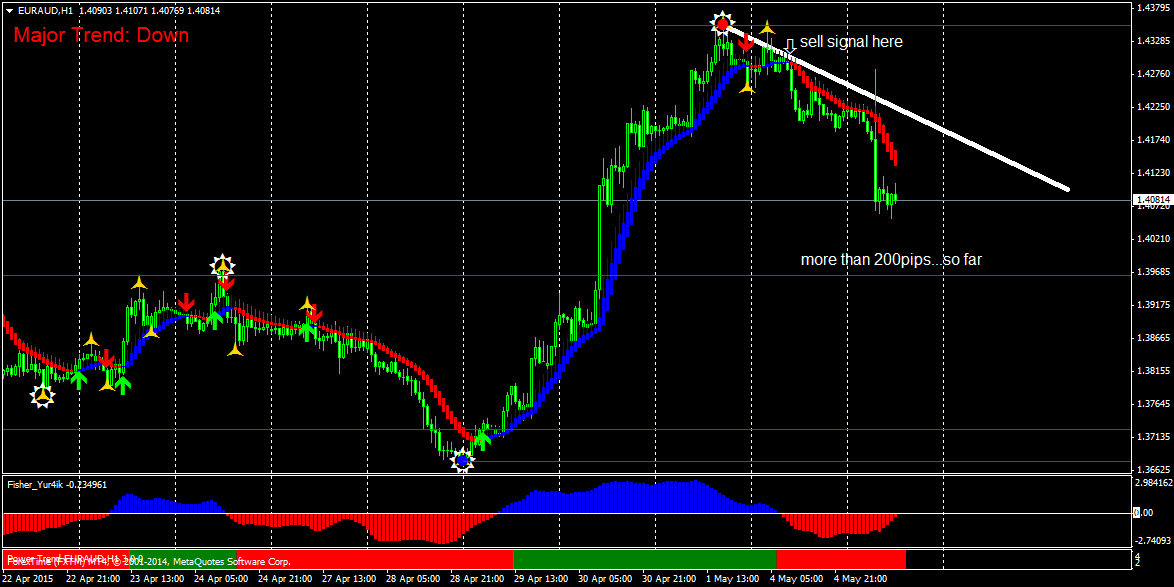In the world of trading, identifying market reversals is crucial for maximizing profits and minimizing losses. The best reversal indicator can serve as a valuable tool for traders looking to make informed decisions in volatile markets. This article will delve into the intricacies of reversal indicators, including their types, how they work, and the best practices for using them effectively.
As trading strategies evolve, the demand for reliable indicators increases. One of the most sought-after types of indicators is the reversal indicator, which signals potential changes in market direction. Understanding how to leverage these indicators can be a game-changer for both novice and experienced traders.
In this guide, we will explore the best reversal indicators available, providing insights into their features, benefits, and how to implement them in your trading strategy. Whether you are a day trader, swing trader, or long-term investor, this article will equip you with the knowledge to enhance your trading performance.
Table of Contents
- What is a Reversal Indicator?
- Types of Reversal Indicators
- Best Reversal Indicators
- Relative Strength Index (RSI)
- Moving Average Convergence Divergence (MACD)
- Bollinger Bands
- Candlestick Patterns
- How to Use Reversal Indicators
- Common Mistakes When Using Reversal Indicators
- Conclusion
What is a Reversal Indicator?
A reversal indicator is a technical analysis tool that helps traders identify potential turning points in the market. These indicators can signal a change in trend direction, allowing traders to enter or exit positions at opportune moments. By utilizing reversal indicators, traders can enhance their decision-making processes and improve their overall trading strategies.
Types of Reversal Indicators
Reversal indicators can be categorized into several types, each serving a distinct purpose in market analysis. Understanding these types can help traders select the most suitable indicators for their strategies.
Momentum Indicators
Momentum indicators measure the speed of price movements and can signal potential reversals when a market becomes overbought or oversold. Common momentum indicators include:
- Relative Strength Index (RSI)
- Stochastic Oscillator
- Momentum Indicator
Volatility Indicators
Volatility indicators assess the degree of price fluctuations and can indicate potential reversals when price movements become extreme. Examples of volatility indicators include:
- Bollinger Bands
- Average True Range (ATR)
- Chaikin Volatility
Pattern Indicators
Pattern indicators identify specific price patterns that often precede reversals. These patterns can be recognized through visual analysis or by using automated tools. Some notable pattern indicators include:
- Head and Shoulders
- Double Tops and Bottoms
- Triangles
Best Reversal Indicators
Several reversal indicators have gained popularity among traders for their effectiveness in identifying market turning points. Below, we explore some of the best reversal indicators and their unique features.
Relative Strength Index (RSI)
The RSI is a momentum oscillator that measures the speed and change of price movements. Ranging from 0 to 100, an RSI above 70 typically indicates an overbought condition, while an RSI below 30 suggests an oversold condition. Traders often look for divergences between price and RSI to anticipate potential reversals.
Moving Average Convergence Divergence (MACD)
The MACD is a trend-following momentum indicator that shows the relationship between two moving averages of a security’s price. When the MACD line crosses above the signal line, it may indicate a bullish reversal, while a crossover below may suggest a bearish reversal. The MACD histogram can also provide insights into potential trend changes.
Bollinger Bands
Bollinger Bands consist of a middle band (simple moving average) and two outer bands that represent standard deviations from the middle band. When prices touch or breach the outer bands, it can signal potential reversals. Traders often use Bollinger Bands in conjunction with other indicators for confirmation.
Candlestick Patterns
Candlestick patterns provide visual insights into market sentiment and potential reversals. Patterns such as dojis, hammers, and engulfing patterns can indicate shifts in buying and selling pressure. Understanding these patterns can enhance a trader's ability to predict market reversals.
How to Use Reversal Indicators
Using reversal indicators effectively requires a systematic approach. Here are some best practices to consider:
- Combine indicators: Use multiple indicators to confirm potential reversals. For example, pairing the RSI with candlestick patterns can provide stronger signals.
- Consider market context: Analyze the overall market trend and news events that may influence price movements.
- Set stop-loss orders: Protect your capital by setting stop-loss orders to limit potential losses in case a reversal does not occur as anticipated.
- Practice risk management: Allocate appropriate position sizes based on your risk tolerance and trading strategy.
Common Mistakes When Using Reversal Indicators
Even experienced traders can fall victim to common pitfalls when using reversal indicators. Here are some mistakes to avoid:
- Over-reliance on a single indicator: Using only one indicator can lead to false signals; always corroborate with additional tools.
- Ignoring market conditions: Failing to consider broader market dynamics can result in poor trading decisions.
- Neglecting to adjust for volatility: Different market conditions may require adjustments in indicator settings.
- Emotional trading: Allowing emotions to dictate trading decisions can lead to impulsive actions contrary to your strategy.
Conclusion
Reversal indicators are invaluable tools for traders seeking to navigate the complexities of financial markets. By understanding the different types of reversal indicators and how to use them effectively, traders can enhance their ability to identify potential market turning points. Remember to incorporate best practices such as combining indicators, considering market context, and practicing sound risk management. As you refine your trading strategy, you will find that the best reversal indicators can significantly contribute to your trading success.
We invite you to share your thoughts in the comments below, explore more articles on our site, and stay informed about the latest trading strategies and tools.
Thank you for reading, and we hope to see you back on our site for more insightful content!


